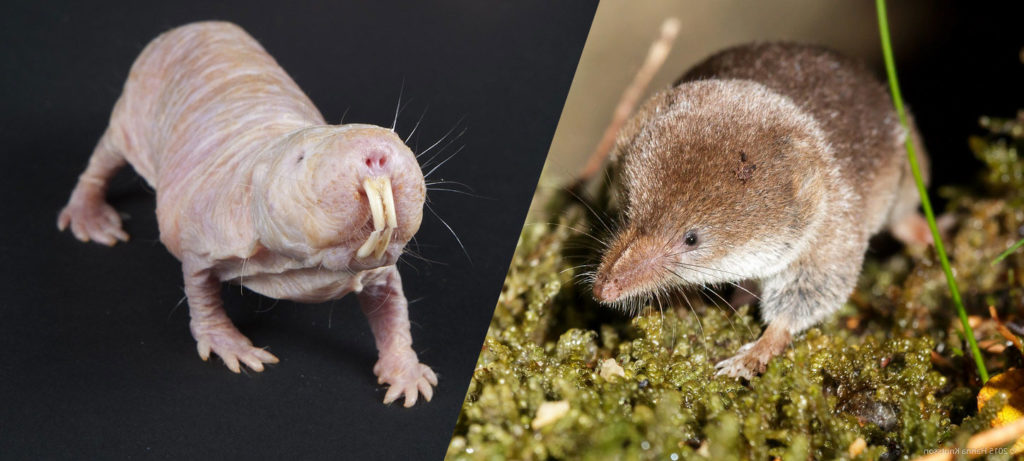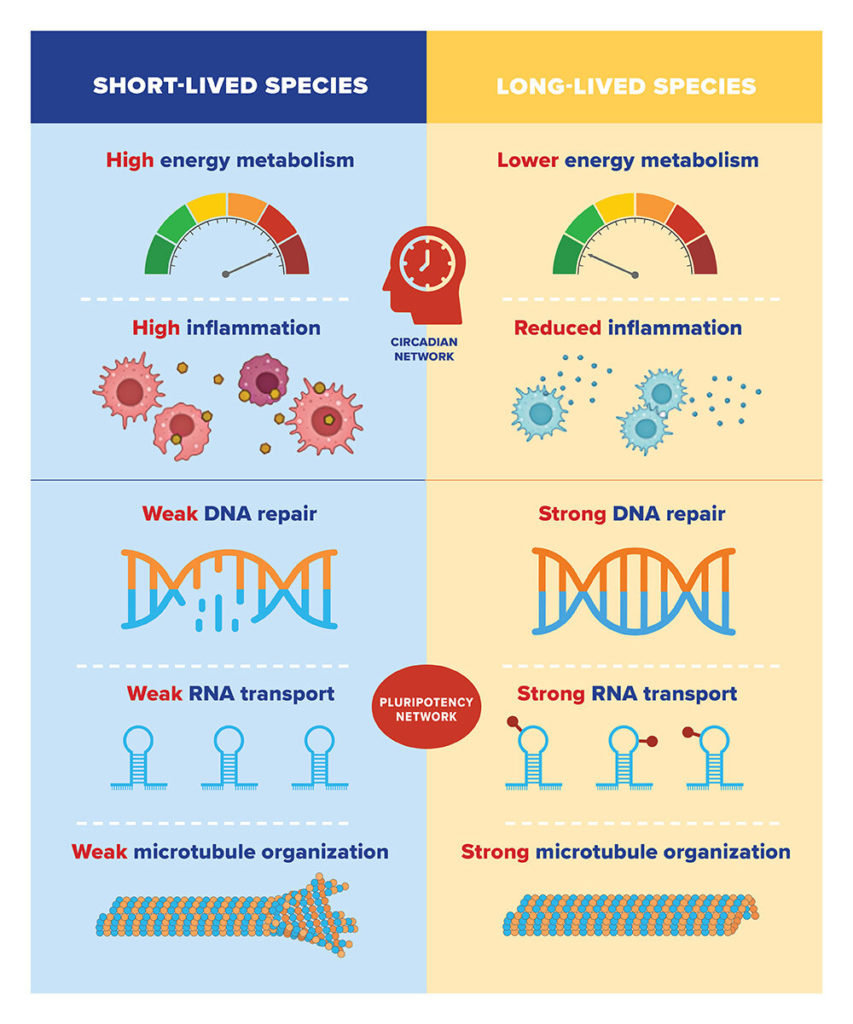Natural selection has produced mammals that age in very different ways. For example, if we take naked
Comparison of longevity genes
Scientists have studied genes associated withlifespan, and discovered interesting specific characteristics. It turns out that two regulatory systems that control gene expression—the circadian and pluripotency networks—are critical for longevity.
Researchers compared gene expression patternsThere are 26 species of mammals with varying maximum lifespans from two years (shrews) to 41 years (naked mole rats). They identified thousands of genes associated with the maximum lifespan of a species, which were positively or negatively correlated with longevity.
 Naked digger and shrew. Hi-tech collage, photo source: flickr
Naked digger and shrew. Hi-tech collage, photo source: flickr
It turned out that long-lived species, as a rule,low expression of genes involved in energy metabolism and inflammation. At the same time, they exhibit high expression of genes involved in DNA repair, RNA transport, and organization of the cell skeleton (or microtubules).
Previous research by Vera Gorbunovaand Andrey Seluanov, who participated in the new study, showed that features such as more efficient DNA repair and a weaker inflammatory response are characteristic of long-lived mammals. Accordingly, short-lived species tended to have high expression of genes involved in energy metabolism and inflammation, and low expression of genes involved in DNA repair, RNA transport, and microtubule organization.
Two pillars of longevity
When researchers analyzed the mechanisms,regulating the expression of these genes, they found that two main systems are involved. Short lifespan genes involved in energy metabolism and inflammation are controlled by circadian networks. That is, their expression is limited to certain times of the day. Accordingly, this will help limit overall gene expression in long-lived species. As a result, scientists will be able to control genes for short life expectancy.
 Comparing gene expression patterns in 26 species withlifespans, Rochester biologists Vera Gorbunova and Andrei Seluanov discovered that the characteristics of various genes are controlled by circadian or pluripotency networks.
Comparing gene expression patterns in 26 species withlifespans, Rochester biologists Vera Gorbunova and Andrei Seluanov discovered that the characteristics of various genes are controlled by circadian or pluripotency networks.
University of Rochester illustration / Julia Joshp
“We must maintain healthy sleep patterns andavoid exposure to light at night, as this can increase the expression of genes that negatively affect lifespan,” explains Gorbunova in a press release for the study.
On the other hand, long duration geneslife - involved in DNA repair, RNA transport and microtubules - are controlled by the so-called pluripotency network. It is involved in the reprogramming of somatic cells - any cells that are not reproductive - into embryonic ones. They rejuvenate and regenerate much more easily by repackaging DNA, which becomes disorganized with age.
“It turned out that evolution activated the pluripotency network to increase lifespan,” the scientists emphasize.
What's the bottom line?
Thus, the pluripotency network and its connectionswith “good” lifespan genes turned out to be “an important discovery for understanding how longevity develops,” concludes Andrei Seluanov. The new work will also help in the development of advanced anti-aging methods. It is planned that they will activate key genes for long life expectancy. Additionally, future medicine will focus on reducing the expression of negative genes that shorten lifespan.
Read more
Chinese AI predicts the course of hypersonic missiles. The retaliatory strike will be ahead
Diagnosis in a minute: how IT is changing healthcare
Scientists have found the largest plant: its length is 180 km, and its age is about 4.5 thousand years